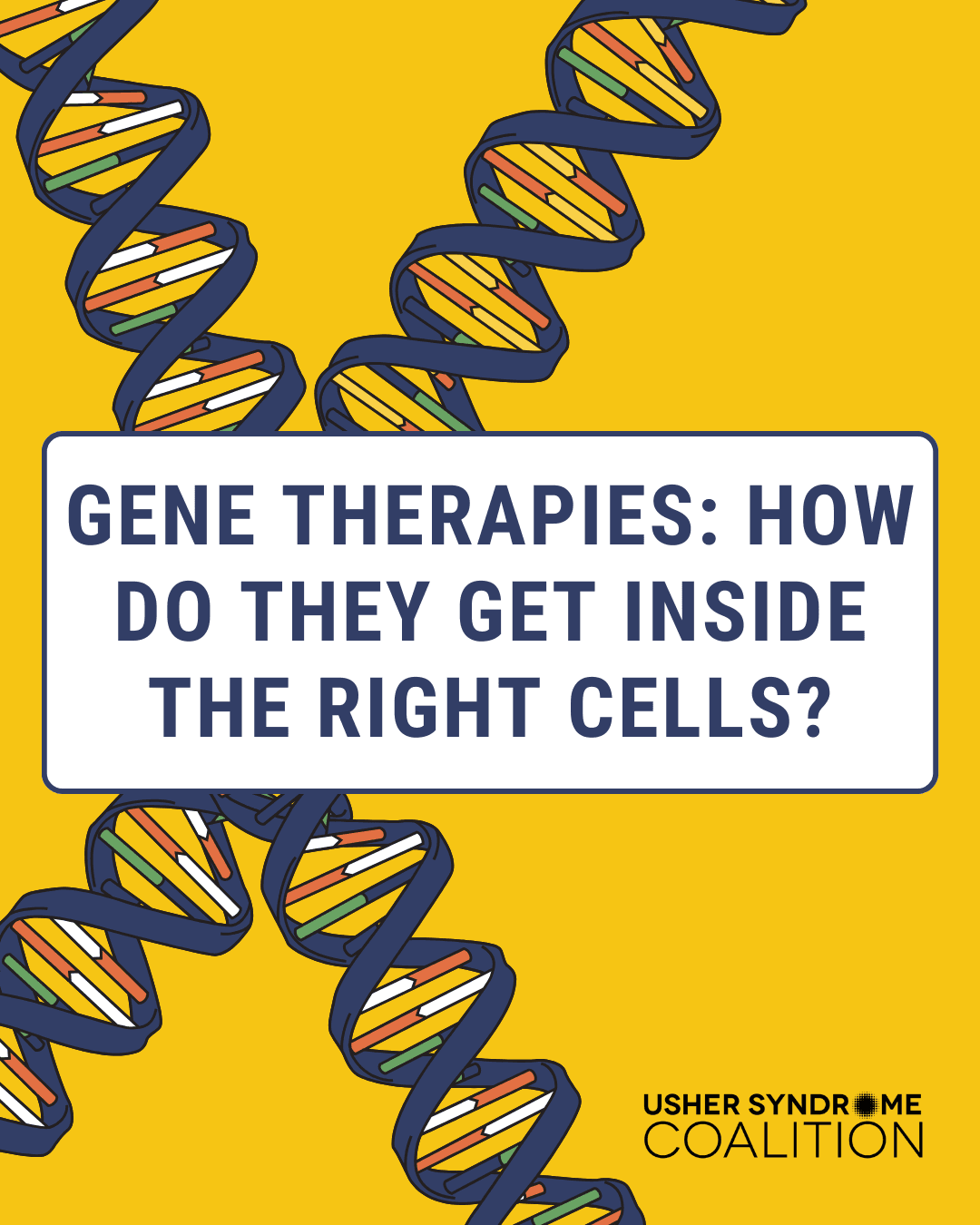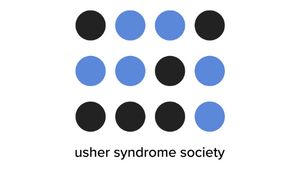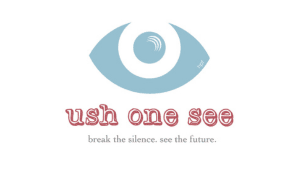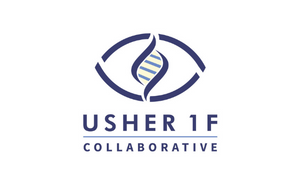
Blog Post 3 of 4: Gene Therapy Series
In the previous blog post, we learned that gene therapies for inherited eye diseases, such as Usher syndrome and retinitis pigmentosa, are delivered to the retina through injections. Today, we will learn how these treatments get inside the right cells to work.
Cells have a protective outer layer called the cell membrane, which can make it hard for gene therapies to get inside. To fix this, scientists put gene therapies into a special carrier that keeps them safe, helps them travel to the right cells, and allows them to enter the cells to do their job.
There are two types of carriers for gene therapies: viruses and lipid nanoparticles (LNPs), which are tiny, fat-like molecules.
1. Viral Delivery (AAV):
One way to deliver gene therapy uses a virus called an Adeno-associated virus (AAV). AAVs are special viruses that don’t make people sick. Scientists take out the virus’s DNA, put the gene therapy inside, and keep the outer shell. This outer shell helps the gene therapy get into the right cells safely. Scientists like using AAVs because they can target specific cells, like those in the eyes, and deliver treatment for a long time.
2. Lipid Nanoparticles (LNPs):
Another way to deliver gene therapy is by using lipid nanoparticles (LNPs), which are tiny particles made in a lab from fat-like molecules called lipids. These lipids form a small bubble that carries the gene therapy inside. LNPs fuse with the cell membrane and drop off the gene therapy inside the cell. You can think of LNPs like delivery trucks that bring the treatment to the right cells. A well-known example of a medicine that uses LNPs is the COVID-19 vaccine, which uses lipid nanoparticles to deliver mRNA into cells.
Both AAVs and LNPs are important tools that help gene therapies reach the right cells and do their job. Scientists choose which one to use based on the treatment, the cells, and the treatment duration.
Next in series: Real-World Examples of Active Gene Therapy Trials







